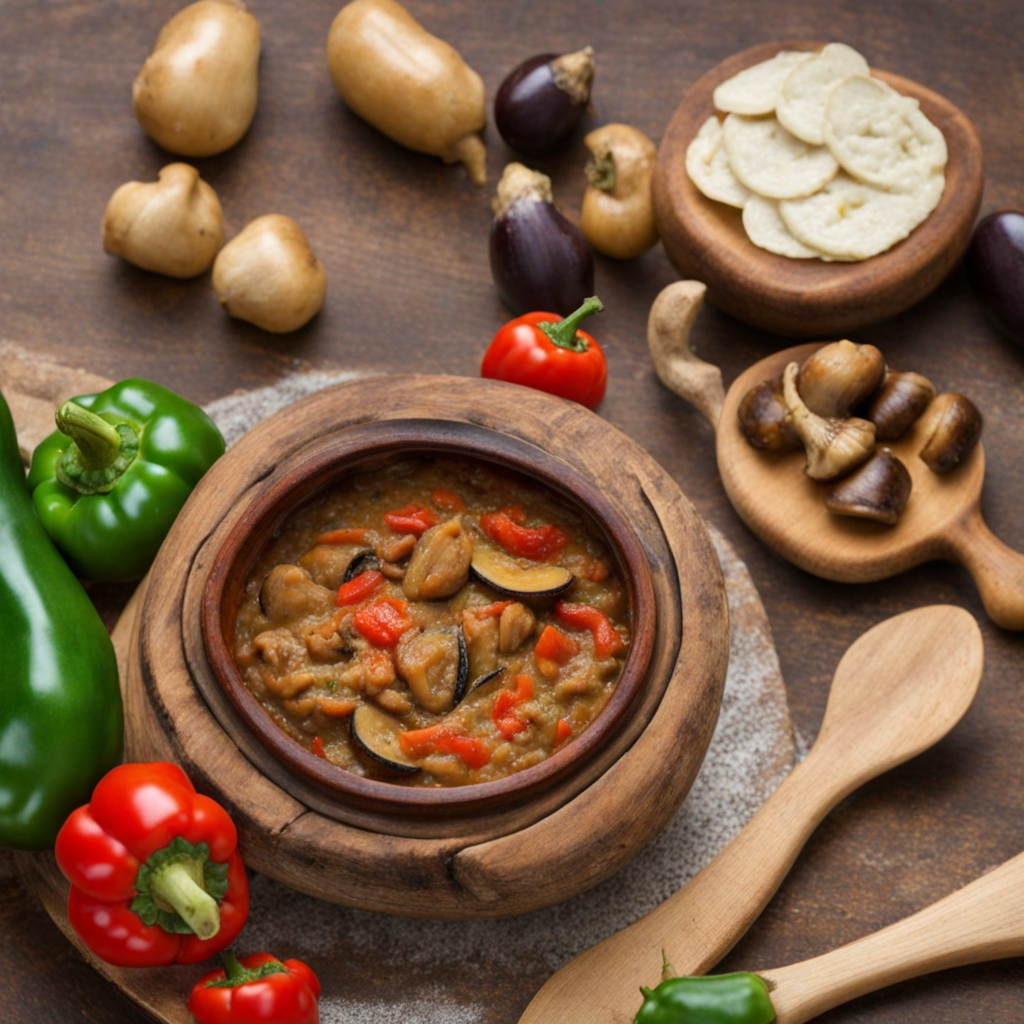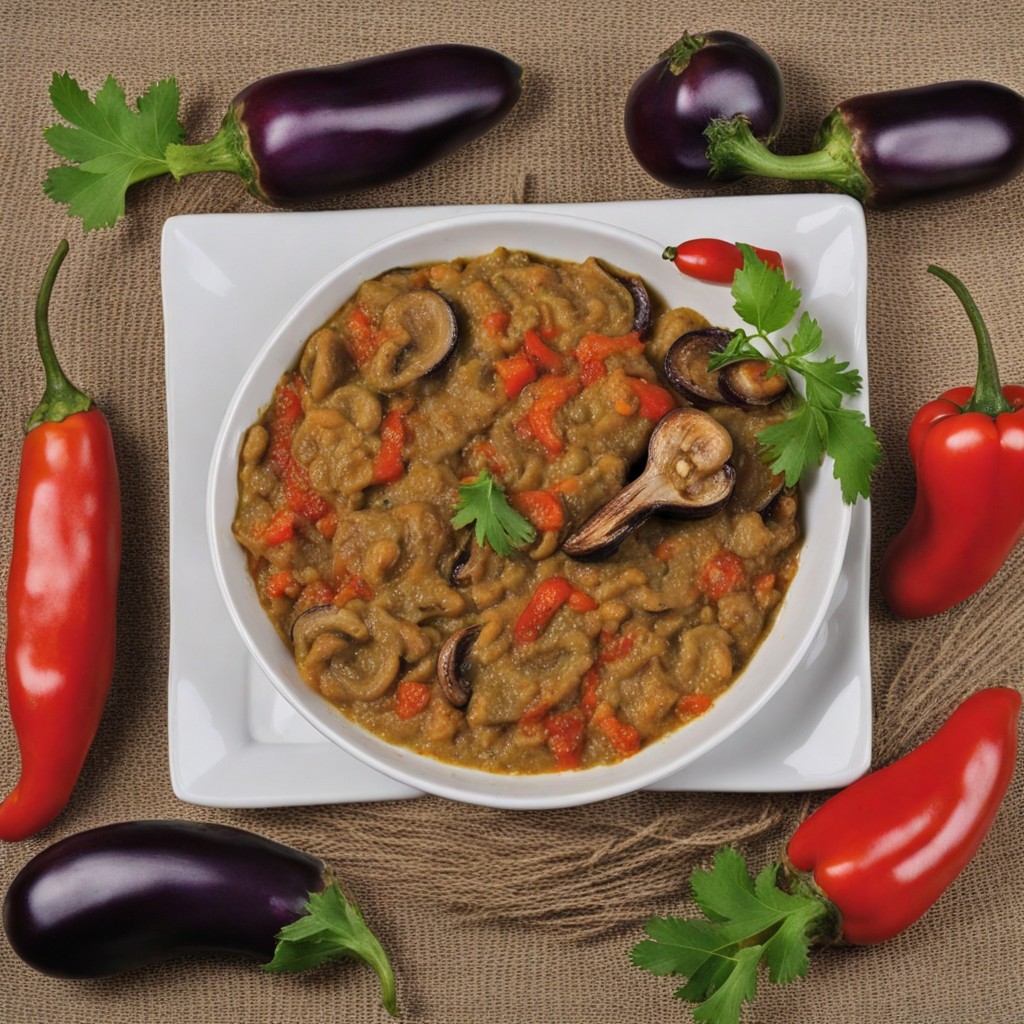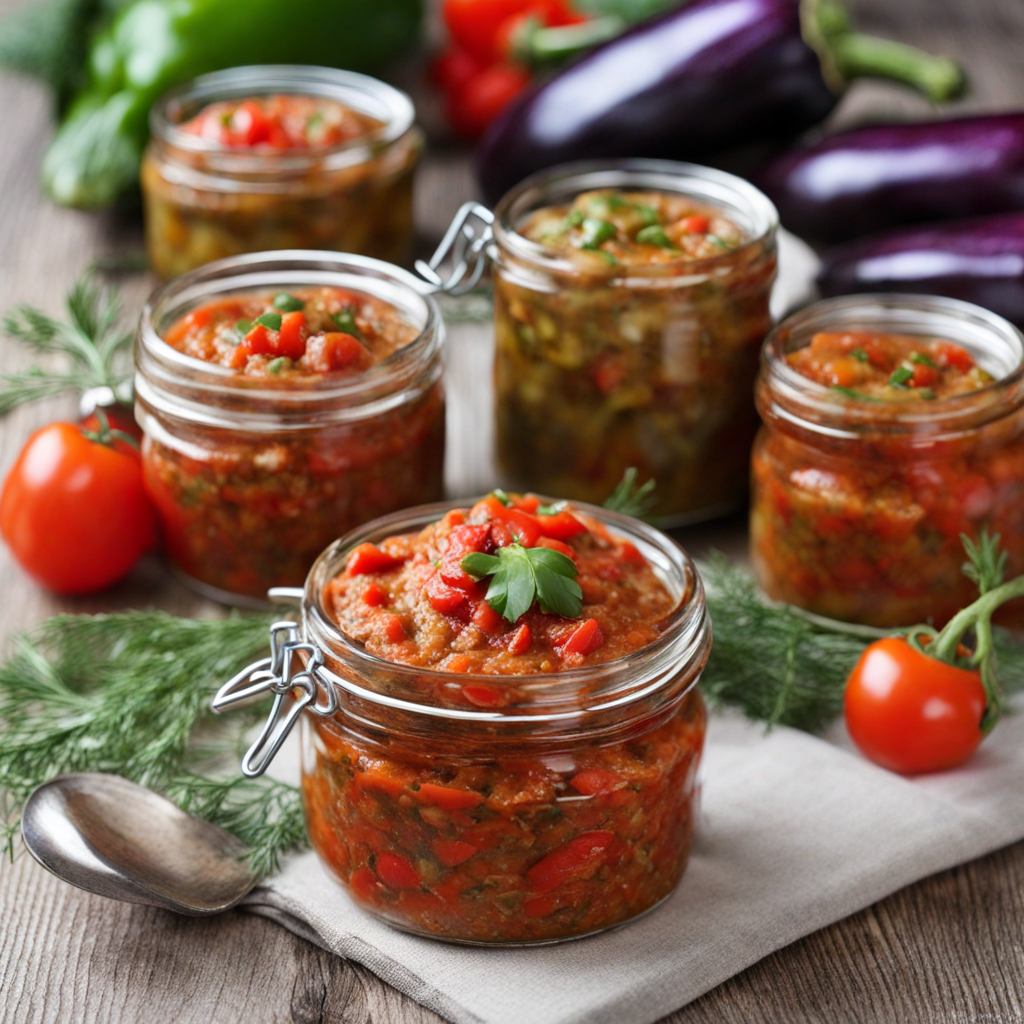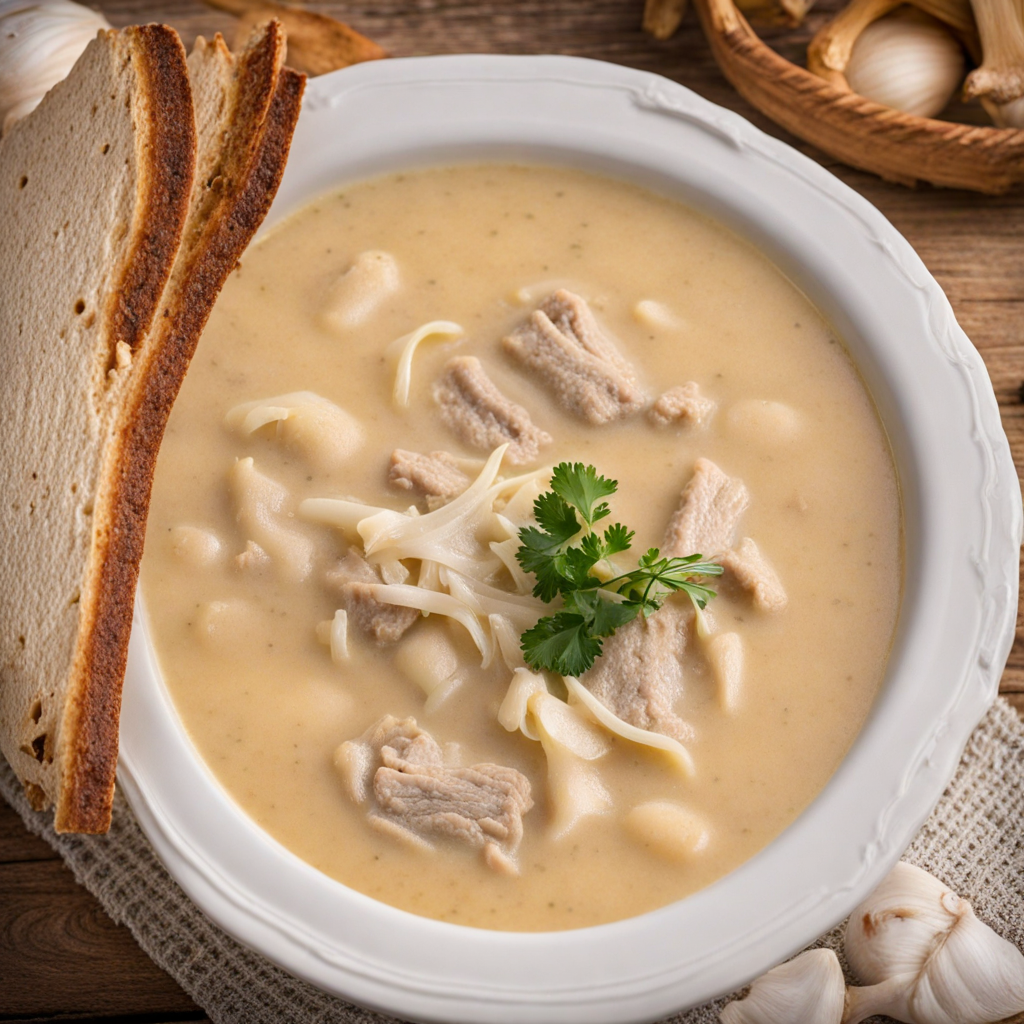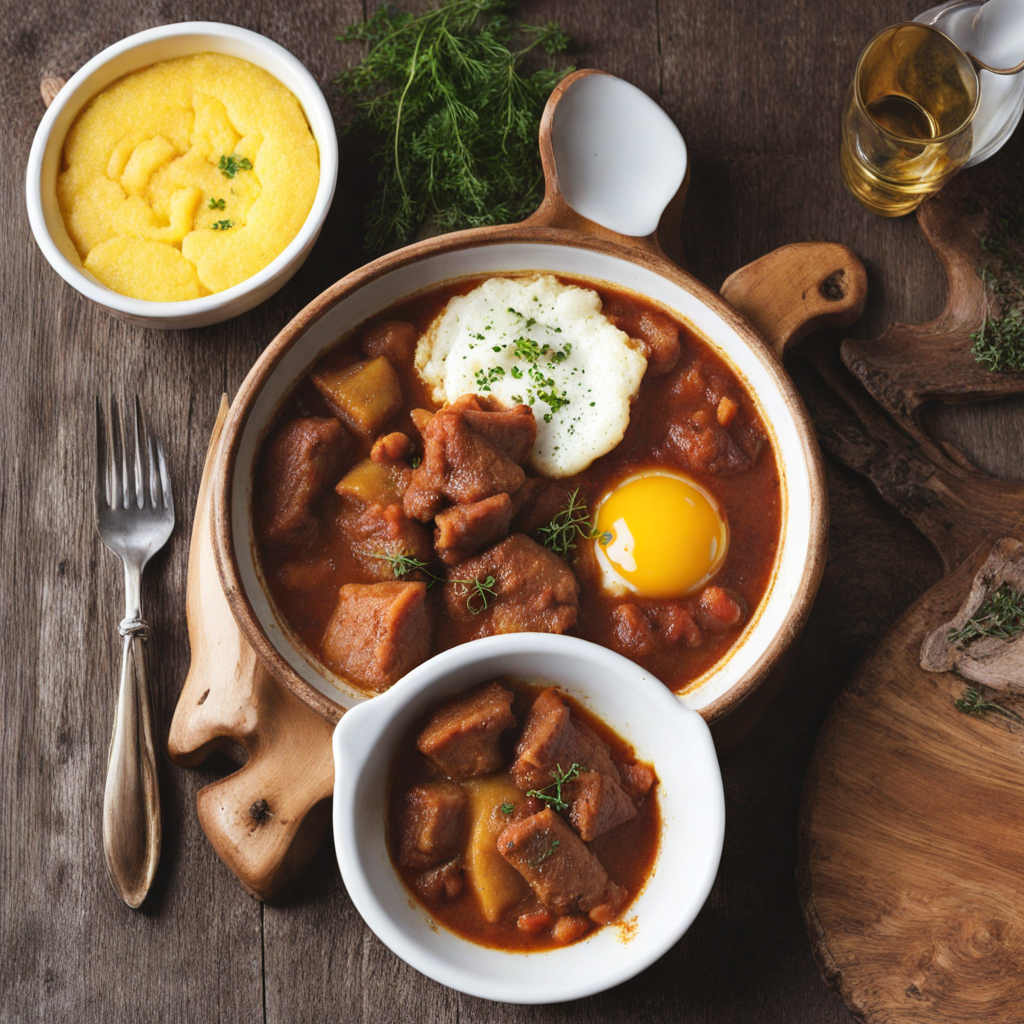Zacuscă
Zacuscă is a traditional Romanian spread that captivates the palate with its rich and complex flavors. This delightful concoction is primarily made from roasted vegetables, most notably eggplant and red peppers, which are cooked to perfection and then blended together. The roasting process imparts a smoky depth to the dish, while the addition of onions, tomatoes, and spices creates a symphony of tastes that are both savory and slightly sweet. The vibrant colors and hearty texture make Zacuscă not only a feast for the taste buds but also a visual delight. Typically enjoyed as an appetizer or a condiment, Zacuscă is often served on crusty bread or as a dip for fresh vegetables. Its versatility allows it to complement a variety of dishes, making it a staple in Romanian households. The spread is usually prepared in large batches, especially in the autumn when vegetables are in season, and can be preserved in jars for enjoyment throughout the year. This rustic dish carries with it the warmth of home-cooked meals and the essence of Romanian culinary traditions. In terms of flavor, Zacuscă offers a delightful balance of sweetness from the roasted vegetables and a hint of acidity from the tomatoes. It is often seasoned with bay leaves, black pepper, and sometimes even a touch of vinegar, enhancing its complexity. Each family might have their own recipe, adding unique twists such as mushrooms or different herbs, but the core ingredients and the love that goes into each batch remain constant. Discovering Zacuscă is not just about tasting a new food; it’s about experiencing a piece of Romanian culture and the comforting embrace of home-cooked goodness.
How It Became This Dish
The Story of Zacuscă: A Romanian Culinary Treasure #### Origins and Early History Zacuscă, a beloved dish in Romanian cuisine, embodies the rich agricultural heritage and vibrant culinary traditions of Eastern Europe. This vegetable spread, primarily made from roasted eggplants, tomatoes, bell peppers, and spices, has its roots deeply embedded in the rustic kitchens of Romania and its neighboring countries, such as Bulgaria and Serbia. The word "zacuscă" is derived from the Slavic verb "zacushta," which means "to preserve" or "to set aside," reflecting the dish's role in food preservation and its seasonal significance. The origins of zacuscă can be traced back to the harvest season when farmers would gather the summer's bounty of vegetables. Traditionally, the preparation of zacuscă was a communal activity, often involving whole families who would roast, peel, and cook the vegetables together. This communal aspect not only fostered social bonds but also ensured that the food was prepared in large quantities to last through the winter months. The dish's development is closely linked to the agrarian lifestyle of the Romanian people. In a country where the rhythm of life is dictated by the seasons, the making of zacuscă became a cherished ritual that marked the transition from summer to autumn. The practice of preserving vegetables in jars for winter consumption became a necessity, as it provided sustenance during the colder months when fresh produce was scarce. #### Cultural Significance Zacuscă holds a special place in Romanian culture and is often associated with family gatherings, celebrations, and holidays. It is not just a dish; it is a symbol of hospitality and warmth. In many Romanian households, a jar of homemade zacuscă is a staple on the table, served as an appetizer or a side dish. It is often enjoyed with fresh bread, which serves to complement the rich, smoky flavors of the spread. Beyond its role as a delicious accompaniment, zacuscă is steeped in cultural symbolism. It connects generations, as recipes are passed down from mothers to daughters, preserving family traditions. Many Romanians have their unique variations of the dish, incorporating local ingredients or family secrets that reflect personal culinary styles. This adaptability is a testament to the dish's enduring popularity and its ability to resonate with the ever-evolving Romanian palate. Moreover, zacuscă has transcended its humble beginnings to become a culinary icon, representing Romanian gastronomy on international platforms. It is often featured in food festivals and cultural events, showcasing the country's culinary heritage to a wider audience. In recent years, as the interest in traditional and artisanal foods has surged globally, zacuscă has found its way onto the menus of Romanian restaurants, both at home and abroad. #### Development Over Time The evolution of zacuscă is a fascinating reflection of Romania's changing agricultural practices and cultural influences. Initially, the dish was primarily composed of locally available vegetables, but over time, the recipe has evolved to incorporate various ingredients and flavors. In the early 20th century, as urbanization began to reshape the Romanian landscape, the demand for convenience in food preparation led to the commercialization of zacuscă. Canned versions of the spread became available, making it easier for urban dwellers to enjoy the flavors of traditional Romanian cuisine without the time-consuming process of home preparation. While these canned varieties offered convenience, many Romanians continued to favor homemade zacuscă, valuing the freshness and personal touch that comes with preparing it from scratch. The post-communist era in Romania brought about significant changes in culinary practices. With the opening of markets and a renewed interest in local produce, the emphasis on seasonal ingredients became more pronounced. Home cooks and chefs alike began to experiment with zacuscă, incorporating new flavors and techniques. The resurgence of farmers' markets and organic farming further encouraged the use of high-quality, locally sourced ingredients, resulting in an even richer and more diverse array of zacuscă variations. In contemporary Romania, zacuscă has also become a canvas for creativity. Chefs are now infusing modern techniques and international flavors into their versions of the dish. Innovations such as adding ingredients like olives, nuts, or even spices like curry have emerged, demonstrating the dish's versatility. This blend of tradition and innovation has allowed zacuscă to remain relevant in an ever-changing culinary landscape. #### The Modern-Day Zacuscă Today, zacuscă is enjoyed year-round, not just during the harvest season. Its popularity has made it a staple in Romanian households and a cherished part of festive occasions. It is especially prevalent during holidays such as Christmas and Easter, where it is often served alongside other traditional dishes. The spread has also become a favorite among Romanians living abroad, serving as a nostalgic reminder of home. In recent years, the rise of health consciousness has led many to appreciate zacuscă not only for its flavor but also for its nutritional benefits. Made primarily from vegetables, it is low in calories and rich in vitamins, making it a popular choice for those seeking healthier snack options. The trend toward plant-based diets has further propelled its popularity, with zacuscă being embraced as a wholesome and delicious alternative to processed spreads. Moreover, the global interest in ethnic and artisanal foods has opened doors for zacuscă to reach international markets. Romanian communities around the world have started to produce and sell their versions of the spread, introducing its distinctive taste to a broader audience. This globalization of zacuscă not only helps to preserve the dish's legacy but also fosters a greater appreciation for Romanian culinary traditions. #### Conclusion Zacuscă is more than just a vegetable spread; it is a testament to Romania's agricultural heritage, cultural identity, and culinary creativity. From its humble beginnings in rural kitchens to its current status as a beloved staple in both Romanian and international cuisine, the journey of zacuscă reflects the resilience and adaptability of a dish that continues to connect people across generations and borders. As it evolves, one thing remains certain: zacuscă will forever hold a cherished place in the hearts and kitchens of those who savor its rich and smoky flavors.
You may like
Discover local flavors from Romania


